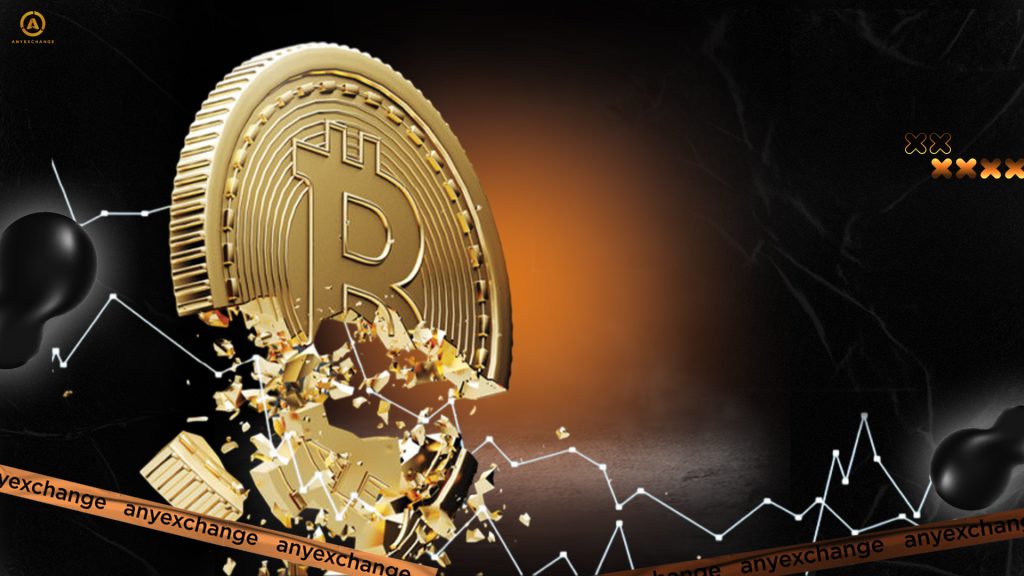
It is well known that the attractiveness of the cryptocurrency market for private investors and institutional players is growing in parallel with its magnetism for attackers. Exchange hacks, phishing attacks, exploitation of technical vulnerabilities and fraud are constant companions of the crypto industry and pose significant risks to it.
At the same time, the rapidly developing cryptocurrency market is becoming more civilized and regulated every year. Under these conditions, insurance of cryptocurrency assets is becoming an in-demand tool for protecting users’ funds.
Cryptocurrency insurance is a relatively new niche in the financial sector, providing an opportunity to hedge the risks associated with investing in digital assets.
In this article, we will look at what this segment is, what types of insurance products are available on the market, and also consider the impact of crypto insurance on the market and its prospects.
What is Crypto Insurance

Crypto insurance refers to a mechanism of financial protection for owners of digital assets against possible losses caused by hacking, technical failures or unlawful actions of third parties.
Unlike traditional insurance, which covers tangible assets and financial risks, insurance of cryptocurrency assets is focused on the digital environment, where traditional methods of risk assessment and compensation are often inapplicable.
The key feature of crypto insurance is the decentralized nature of digital assets. While in the traditional insurance industry, insurance payments are regulated by centralized structures, in the crypto space, decentralized mechanisms can be applied (DeFi insurance).
Prerequisites for the emergence of crypto insurance

Growth of the cryptocurrency market and risks
The crypto market is growing in capitalization every year, making it an increasingly attractive target for fraudsters. According to reports from analytical agencies, annual losses from crypto platform hacks run into billions of dollars. In 2023, the damage from cryptocurrency platform hacks amounted to approximately $2.61 billion. In 2024, according to various estimates, this amount increased by 15-20% and exceeded $3 billion. The lion’s share of these funds was stolen as a result of hacker attacks, and about a third — due to fraud and scams.
In such conditions, the risks of investing in cryptocurrencies become a significant obstacle to the mass adoption of digital assets, and crypto insurance acts as a tool to minimize the possible financial losses of cryptocurrency companies, projects and their clients. Therefore, the market willingly applies this tool, which allows maintaining a positive image and trust of users.
Demand for investor protection
Private clients and institutional companies, for their part, also seek to ensure the protection of their cryptocurrencies from hacker attacks and to minimize the risks associated with the storage and transactions of digital assets. In this context, crypto insurance for investors is an important component of stable participation in the market, providing guarantees for the safety of their personal funds.
Directions and types of crypto insurance
Cryptocurrency wallet insurance
Cryptocurrency wallet insurance is aimed at protecting users’ funds from hacking, loss of access and errors related to the storage of private keys. Companies offering this type of cryptocurrency insurance cover losses in the event of unauthorized access to the wallet or loss of funds due to technical failures. Examples of successful solutions inсlude insurance products from Lloyd’s of London and BitGo.
Cryptocurrency Exchange Risk Insurance

Cryptocurrency exchange hacking and vulnerability insurance helps protect customers from losses caused by hacking or internal platform failures. Such programs cover user losses in the event of exchange hacking, data leakage or platform failure. A prominent example is Aon’s coverage of the Coinbase crypto exchange.
Investment Risk Insurance
Cryptocurrency investment risk insurance provides protection for cryptocurrency owners who wish to minimize potential losses from a sharp drop in prices or the bankruptcy of cryptocurrency platforms. For example, Nexus Mutual has developed such policies, which are specifically designed to mitigate the risks of DeFi projects.
International experience of crypto insurance
At the global level, a number of insurance giants have already included the insurance of blockchain projects and cryptoassets in their activities. Among the leading companies in this field are
- Lloyd’s of London (UK);
- Aon (USA);
- Munich Re (Germany).
In Europe and the US, crypto insurance is becoming increasingly popular, covering both institutional investors and private owners of digital assets. In Asia, the market is also actively developing, especially in countries with a high level of crypto adoption, such as Japan and South Korea.
The crypto insurance market is in its infancy in russia and a number of other countries such as India, Brazil and South Africa. A common feature of these countries is the high volatility of national currencies and uncertainty in the regulation of digital assets, which makes it difficult to develop insurance products in this area.
Advantages and disadvantages of crypto insurance
The key advantage of crypto insurance is to protect investors and businesses from financial losses caused by hacker attacks, technical failures and fraud. In this way, it helps increase confidence in the cryptocurrency market and encourages institutional investment in digital assets.
An example of successful insurance coverage is the case of Bitfinex exchange, which compensated $72 million in customer losses after a hack in 2016. Another example is the insurance coverage for customers of the crypto exchange Binance, whose SAFU fund (Secure Asset Fund for Users) provided $40 million in compensation after an attack in 2019.
The main risks and shortcomings of crypto insurance that hinder the development of the segment are the lack of clear regulation, the complexity of risk assessment, and the high cost of insurers’ services.
In some cases, insurers deny payments due to insufficient legal frameworks or technical nuances. Examples of ineffective solutions inсlude cases where insurers did not cover losses of DeFi platform customers due to lack of contractual obligations. For example, in 2022, Cover Protocol ceased operations, leaving users unprotected, and in 2023, the Mango Markets insurance fund failed to cover $114 million in losses from a major hack.
How to insure cryptocurrency
If you’ve decided to take extra security measures and insure your cryptocurrency, there are a few key factors to consider:
- Choosing an insurance company. It’s critical for investors and businesses to choose reliable insurers with both international and local expertise. Check their reputation and performance history. Some of the leading cryptocurrency insurance companies inсlude Lloyd’s, Aon, and Nexus Mutual.
- Coverage and policy terms. Read the terms and conditions carefully, including indemnities, possible exclusions and claims processing times. Pay attention to payout limits, which can vary widely from company to company. For example, some insurers will only cover a portion of the loss rather than the full amount. It is also important to consider whether the insurance covers fraud, hacking, or technical failures. For example, the Coinbase exchange only insures users’ funds in the event of hacking of its internal systems, but does not cover losses due to phishing attacks or users’ own mistakes.
- The cost of cryptocurrency insurance. Different insurance products have different costs, depending on the type of assets protected and the level of risk. On average, it varies from 1% to 5% of the insured amount per year. For example, insurance for hot wallets is more expensive due to higher hacking risks, while cold wallets may have lower rates. BitGo, for example, offers insurance for assets up to $100 million with a premium of about 2% per year. Lloyd’s of London offers customized solutions with costs based on individual customer parameters, while Nexus Mutual offers decentralized insurance products with dynamic premium calculations based on market risks.
- Regulation. It is important to note that the regulation of crypto insurance can vary from jurisdiction to jurisdiction. In the case of decentralized crypto insurance, where there is no central insurer, it is managed through smart contracts and mutual insurance mechanisms. This presents additional regulatory challenges, as there is no single legal entity responsible for insurance payments, and users themselves are involved in the compensation decision-making process. For example, the aforementioned Nexus Mutual platform operates on the principle of decentralized insurance; similarly, platforms such as InsurAce, Bridge Mutual, and Unslashed Finance operate in a similar way, offering different solutions to protect crypto assets through decentralized insurance pools: they require a community vote to confirm insurance claims, which can slow down the payment process and lead to disputes.
Prospects for crypto insurance development
According to analyst reports, the global crypto insurance market in 2024 is estimated at $1.5 to $3 billion, and experts predict its further growth in the coming years. In 2025, the capitalization of the segment may reach $5 billion, and in 2030 it may exceed $10 billion.
The main factors contributing to the development of the market:
- Tightening regulation of the crypto sector.
- Increase in the number of institutional investors.
- Emergence of new insurance products for DeFi, NFT and meta-universes.
According to experts, the following types of products are expected to see the highest demand in the coming years:
- Insurance of cryptocurrency exchanges against hacks and technical failures.
- Insurance of crypto wallets against loss of access and hacking.
- Insurance of cryptocurrency investment risks, including protection against sharp fluctuations in exchange rates.
- Insuring blockchain projects to protect smart contracts from vulnerabilities.
It is expected that the main users of insurance products in the cryptosphere will be institutional investors, operators of crypto exchanges and crypto wallets, developers of blockchain projects, as well as participants in the DeFi sector and private investors interested in protecting their digital assets.
Conclusion

The crypto insurance market is in a phase of active formation. Despite the existing pitfalls, such as the complexity of risk assessment, the lack of uniform regulatory standards, and the high cost of services, this sector is becoming an important part of the global crypto market.
The outlook for crypto insurance in 2025 supports the trend towards further development of insurance products, specification of regulation and increasing institutional demand. With increasing risks and tightening security requirements, digital asset insurance is becoming an essential part of the cryptocurrency ecosystem.
Thank you for your attention. Invest safely and profitably!
AnyExchange is a cryptocurrency exchanger through which you can convert digital assets at the most favorable rate, as well as make fast and anonymous money transfers worldwide.






